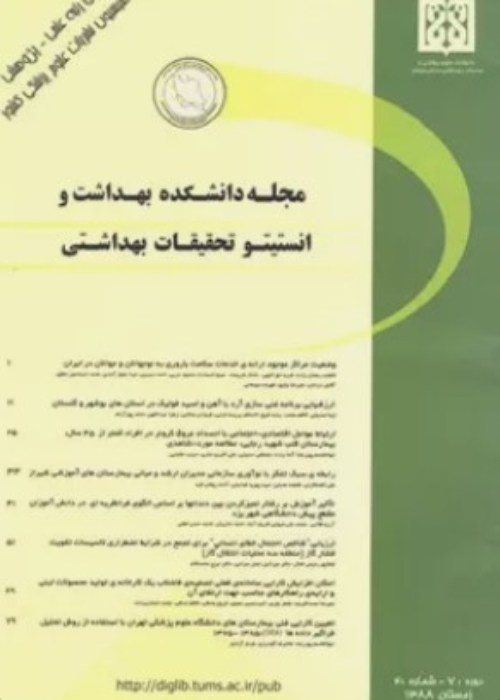Involving the Community in the Early Child Development ECD Programs: Lessons Learned from the MAZDAK Project in Eivanak Community in Tehran
Author(s):
Abstract:
Background And Aim
Much emphasis is being put on participation of the community and parents in early child development (ECD). This article discusses the lessons learnt from the MAZDAK project, which attempts to involve the community in the Monitoring and Promoting Childrens Development Program.Materials and Methods This was a 9-month community-based participatory research (CBPR) project of the Health System Research (HSR) type. The target population were the families residing in western Eivanak, including 300 children. All the phases of the project were conducted with participation of groups of 10 local volunteer women (in Persian singular Rezakar, plural Rezakaran), each group covering 30 children. At the end of the period challenges and limitations of the community participation were discussed in 2 focus-group discussions (FGDs) and a telephone survey with the participation of 50 of the parents.
Results
Community participation could be seen at three levels: 1. Integrating and linking the existing services and programs in community organizations; 2. Creating an interface organization of people in order to facilitate involvement of community members (Rezakaran); 3. Involving the parents themselves in the process of monitoring and promoting child development. Barriers to more active participation of parents were as follows: mothers occupation; number of children; fathers or other family members disagreement of the; holidays and bad weather; large numbers of individuals under coverage of each Rezakar which made her deeper understanding and communication with the mothers difficult; irregular follow-ups; age and educational differences between the Rezakaran and those under their coverage; frequent changing of Rezakaran.Conclusion
Building trust, engaging and empowering people and governmental and non-governmental organizations is the greatest challenge in such a program. Experience shows that it is possible to increase the chance of success by selecting peoples favorite programs and priorities, using simple and friendly tools (ASQ Album), use of technologies to facilitate communication, selection of volunteers with due consideration of social conditions and, finally, increasing the motivation of volunteers for sustainability of activities.Keywords:
Language:
Persian
Published:
Scientific Journal of School of Public Health and Institute of Public Health Research, Volume:14 Issue: 2, 2016
Pages:
87 to 94
magiran.com/p1584897
دانلود و مطالعه متن این مقاله با یکی از روشهای زیر امکان پذیر است:
اشتراک شخصی
با عضویت و پرداخت آنلاین حق اشتراک یکساله به مبلغ 1,390,000ريال میتوانید 70 عنوان مطلب دانلود کنید!
اشتراک سازمانی
به کتابخانه دانشگاه یا محل کار خود پیشنهاد کنید تا اشتراک سازمانی این پایگاه را برای دسترسی نامحدود همه کاربران به متن مطالب تهیه نمایند!
توجه!
- حق عضویت دریافتی صرف حمایت از نشریات عضو و نگهداری، تکمیل و توسعه مگیران میشود.
- پرداخت حق اشتراک و دانلود مقالات اجازه بازنشر آن در سایر رسانههای چاپی و دیجیتال را به کاربر نمیدهد.
In order to view content subscription is required
Personal subscription
Subscribe magiran.com for 70 € euros via PayPal and download 70 articles during a year.
Organization subscription
Please contact us to subscribe your university or library for unlimited access!


